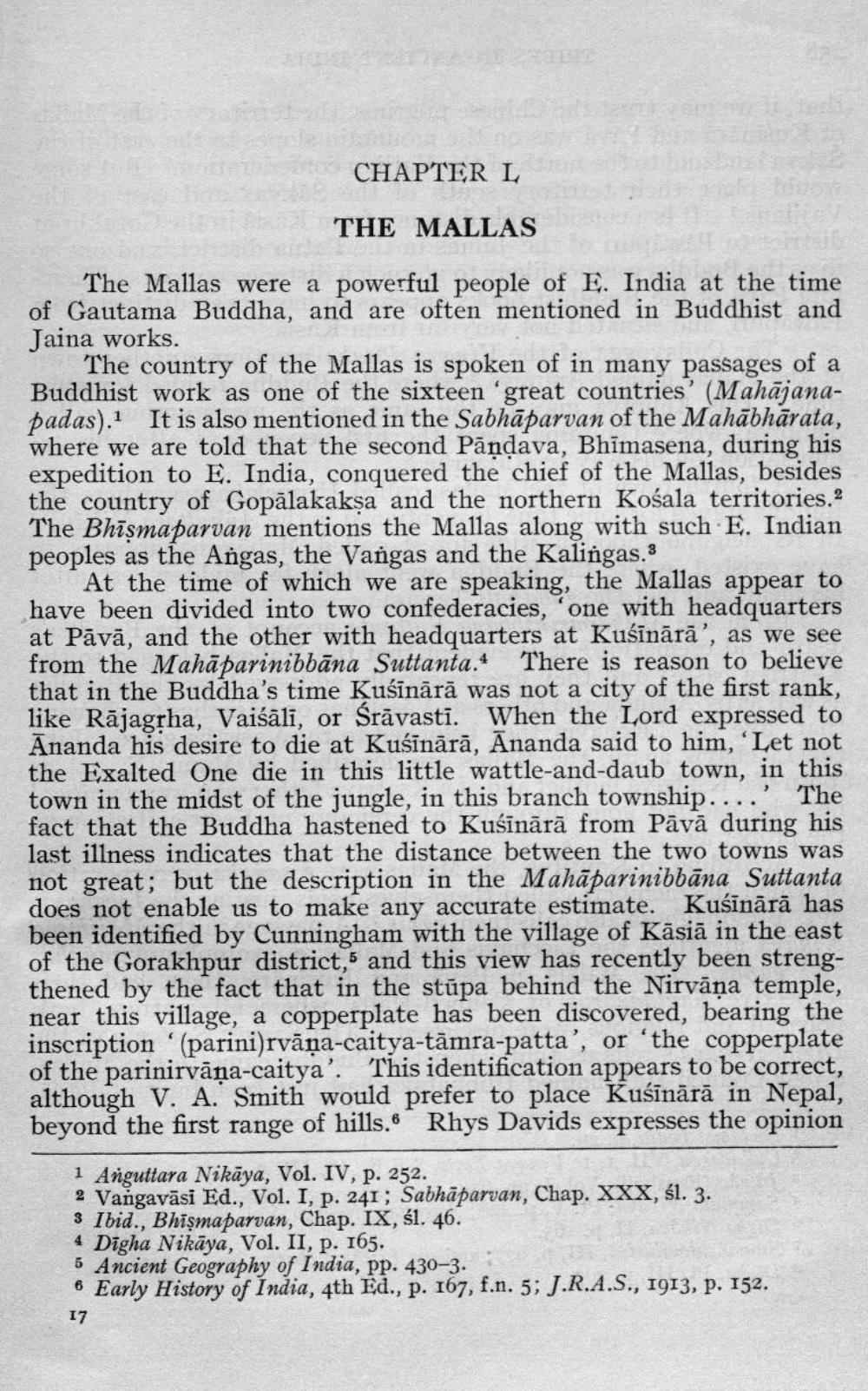________________
CHAPTER L
THE MALLAS
The Mallas were a powerful people of E. India at the time of Gautama Buddha, and are often mentioned in Buddhist and Jaina works.
The country of the Mallas is spoken of in many passages of a Buddhist work as one of the sixteen 'great countries' (Mahājanapadas).1 It is also mentioned in the Sabhāparvan of the Mahābhārata, where we are told that the second Pāndava, Bhimasena, during his expedition to E. India, conquered the chief of the Mallas, besides the country of Gopālakaksa and the northern Kośala territories. 2 The Bhīşmaparvan mentions the Mallas along with such E. Indian peoples as the Angas, the Vangas and the Kalingas.3
At the time of which we are speaking, the Mallas appear to have been divided into two confederacies, 'one with headquarters at Pāvā, and the other with headquarters at Kuśīnārā', as we see from the Mahāparinibbāna Suttanta. There is reason to believe that in the Buddha's time Kuśīnārā was not a city of the first rank, like Rājagrha, Vaiśālī, or Srāvasti. When the Lord expressed to Ananda his desire to die at Kuśīnārā, Ānanda said to him, 'Let not the Exalted One die in this little wattle-and-daub town, in this town in the midst of the jungle, in this branch township.... The fact that the Buddha hastened to Kuśīnārā from Pāvā during his last illness indicates that the distance between the two towns was not great; but the description in the Mahāparinibbāna Suttanta does not enable us to make any accurate estimate. Kuśīnārā has been identified by Cunningham with the village of Kāsiā in the east of the Gorakhpur district,5 and this view has recently been strengthened by the fact that in the stūpa behind the Nirvāņa temple, near this village, a copperplate has been discovered, bearing the inscription (parini)rvāņa-caitya-tāmra-patta', or 'the copperplate of the parinirvāṇa-caitya'. This identification appears to be correct, although V. A. Smith would prefer to place Kuśīnārā in Nepal, beyond the first range of hills.6 Rhys Davids expresses the opinion
1 Anguttara Nikāya, Vol. IV, P. 252. 2 Vangavāsi Ed., Vol. I, p. 241; Sabhāparvan, Chap. XXX, śl. 3. 3 Ibid., Bhīşmaparvan, Chap. IX, śl. 46. 4 Digha Nikaya, Vol. II, p. I65. 5 Ancient Geography of India, pp. 430-3. 6 Early History of India, 4th Ed., p. 167, f.n. 5; J.R.A.S., 1913, p. 152. 17




